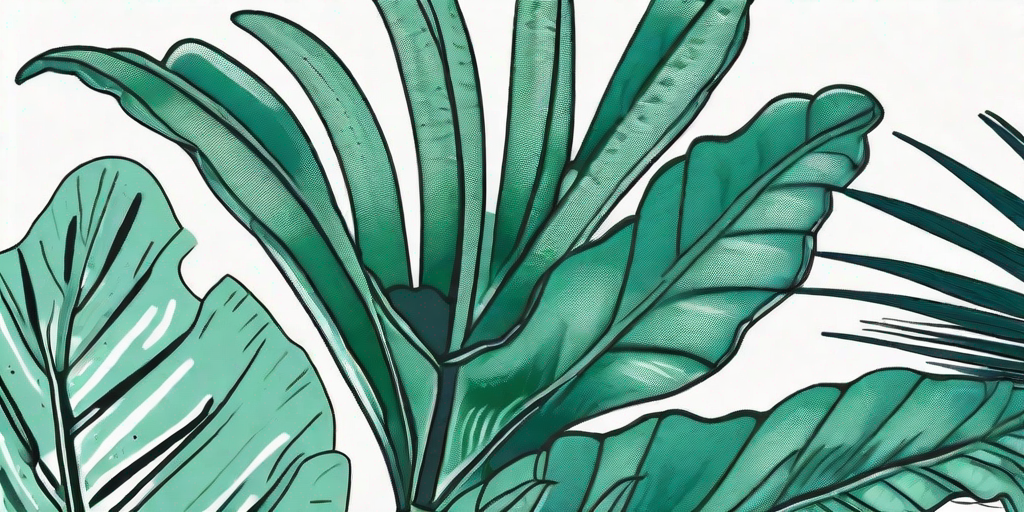
Welcome to the jungle! Or at least, that's how it might feel when you introduce the crocodile fern into your home. This exotic plant, with its unique, reptilian-like fronds, can transform any living space into a lush, tropical paradise. But don't worry, unlike its namesake, this fern won't bite!
The Crocodile Fern: A Brief Introduction
Native to the rainforests of Australia, the crocodile fern, or Microsorum musifolium, is a species of fern known for its distinctive, scale-like foliage that resembles the skin of a crocodile. Hence, the name. It's a hardy plant that can thrive both indoors and outdoors, given the right conditions.
What makes the crocodile fern a standout is its unique aesthetic appeal. The dark green, glossy leaves, with their intricate patterns, can add a touch of exotic charm to any home decor. Plus, it's a great conversation starter. Imagine the look on your guests' faces when you tell them there's a crocodile in the house!
How to Grow a Crocodile Fern
Now that you're intrigued by this fascinating plant, you're probably wondering how to grow one. Fear not, aspiring jungle explorers, for the crocodile fern is a relatively easy plant to grow, even for those without a green thumb.
Choosing the Right Spot
First things first, you need to find the perfect spot for your crocodile fern. This plant loves humidity and indirect light, so a bathroom or kitchen window sill would be an ideal location. However, if you live in a particularly dry climate, you might want to consider investing in a humidifier to keep your fern happy.
Remember, while the crocodile fern can tolerate low light conditions, it won't thrive in complete darkness. So, no matter how much you might want to recreate the ambiance of a rainforest, don't put your fern in a windowless room!
Planting the Fern
Once you've found the perfect spot, it's time to plant your fern. The crocodile fern prefers a well-draining soil, so opt for a potting mix that's specifically designed for ferns. If you can't find one, you can make your own mix by combining equal parts peat moss, perlite, and compost.
When planting your fern, make sure the crown of the plant (where the fronds emerge) is slightly above the soil surface. This will prevent the plant from becoming waterlogged and developing root rot.
Caring for Your Crocodile Fern
Now that your crocodile fern is happily planted, it's time to learn how to take care of it. While this plant is relatively low-maintenance, there are a few things you need to keep in mind to ensure it stays healthy and vibrant.
Watering
Like most ferns, the crocodile fern loves moisture. However, it doesn't like to sit in water. Therefore, it's important to water your fern thoroughly, but make sure the excess water drains out. A good rule of thumb is to wait until the top inch of soil is dry before watering again.
Also, remember to mist your fern regularly to increase humidity, especially during the dry winter months. Just be careful not to overdo it. You want to create a rainforest, not a swamp!
Feeding
While the crocodile fern isn't a particularly hungry plant, it does appreciate a good feed every now and then. Use a balanced, water-soluble fertilizer, and feed your fern once a month during the growing season (spring and summer). Just remember to dilute the fertilizer to half the recommended strength to avoid burning the roots.
During the dormant season (fall and winter), you can cut back on feeding. After all, even crocodiles need to hibernate!
Common Problems and How to Solve Them
Despite its hardy nature, the crocodile fern can sometimes encounter a few problems. But don't worry, most of these issues are easy to fix.
Brown Leaves
If the leaves of your fern are turning brown, it could be a sign of underwatering or low humidity. Check the moisture level of the soil, and increase watering if necessary. Also, consider misting your fern more frequently or using a humidifier.
Yellow Leaves
On the other hand, if the leaves are turning yellow, it could be a sign of overwatering. Remember, while the crocodile fern loves moisture, it doesn't like to sit in water. So, make sure the excess water drains out after watering, and wait until the top inch of soil is dry before watering again.
FAQs
- Is the crocodile fern toxic to pets?
No, the crocodile fern is non-toxic to both cats and dogs. However, it's always a good idea to keep plants out of reach of curious pets.
- Can I propagate the crocodile fern?
Yes, you can propagate the crocodile fern by division. Simply divide the plant at the rhizome (the horizontal stem from which the fronds emerge) and plant the divisions in separate pots.
- How often should I repot my crocodile fern?
Generally, you should repot your crocodile fern every 2-3 years, or when it outgrows its current pot. However, remember that this fern likes to be slightly root-bound, so don't choose a pot that's too big.
Conclusion
So there you have it, a comprehensive guide to growing and caring for the crocodile fern. With its unique, exotic appeal, this plant can add a touch of wild beauty to any home. Plus, it's relatively easy to care for, making it a great choice for both novice and experienced plant parents.
So why not take a walk on the wild side and introduce a crocodile fern into your home? Just remember, while it might look like a crocodile, it doesn't eat like one. So, no need to feed it meat!















